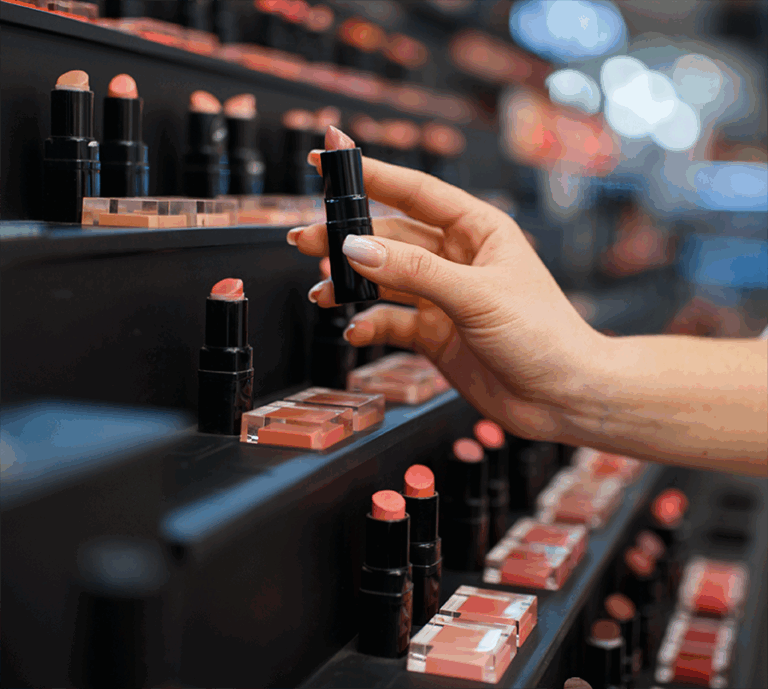×

There’s a growing gap in beauty retail that most brands don’t see coming. Our Director of Strategy, Alexa Jewell Schaefer, shares more in VMSD.

At this point, we’ve seen a thousand memes – and reports – trying to get to know Gen Z. From passing the “vibe check” to being “the most,” marketers and business owners are working hard to understand how Gen Z speaks, thinks and feels.
Seems like just yesterday we were having the same conversations about Millennials. But truth is, the oldest members of that generation are hitting their forties now, putting them directly on Gen X’s coattails.
With this in mind, we decided to dig deeper into what exactly it is that Gen Z consumers actually look for from brands today. One of our more interesting observations is that this emboldened generation seems to value self-expression above all else. But brands can’t win with Gen Z (and their $150 billion in spending power) by simply following trends and using the latest lingo. They need to deeply understand what Gen Z expects at major touchpoints along the customer journey. To add some color, we surveyed a handful of Gen Z’ers about their recent shopping and dining experiences. Here’s what we uncovered:
Three-quarters of Gen Z shop on their smartphones – more than any other generation. Yet despite being the most digitally savvy generation, Gen Z actually loves shopping in physical stores. In fact, 81% of Gen Z prefers to shop in stores and more than half do so because it allows them to disconnect from social media and the digital world for a while. And while Gen Z may research online, visiting stores in person gives them opportunity to discover brands and products.

“With so much information out there…sometimes just a little face-to-face or a good, informative store display can get me to purchase something.”
Almost all of our Gen Z survey takers stressed the importance of retailers having thoughtful store displays that provide them with information they’re looking for.
“If brands could take more care in their displays and education on products, I think that would help a lot. Racks and shelves of random stuff without any description or guidance make it harder for me to figure out if I actually want to purchase something.”
Brands have to be honest with themselves regularly about why they believe shoppers should actually come to their store vs. shopping online or visiting competitors? Much of this comes down to having a holistic approach where both the digital and physical experiences support one another and allow retailers to better connect with consumers.
Gen Z has been living in the digital age since birth, which has proven to make their attention spans particularly short. It ultimately equates to more impatience and intolerance for imperfect user experiences, both digital and physical.
So, we asked our Gen Z participants to describe some consistently bad or frustrating in-store shopping experiences they’ve had recently, to get a sense of what they believe retailers could be doing better:
“Gondolas on gondolas of stuff that are 5-10 boxes deep. It is like walking into an organized junkyard. So many places stock their spaces to the max. And they all look the same. There’s nothing unique about it. Nothing special.”
This was a theme in most of the responses, which spoke to the importance of retailers creating special shopping atmospheres that invite Gen Z consumers to explore vs. feeling overwhelmed. The quantity of product must be digestible, but even more so, the retail experience has to be consistent with the brand as a whole. What’s distinctive to your brand that will draw in Gen Z consumers to not only visit your store, but come back to it? How can you utilize your space better and create thoughtful moments instead of overloading shoppers with too much product?
Shift from traditional retail to more expressive brand experiences that connect to an emotionally in-tune Gen Z audience who values in-the-moment off-the-cuff “vibes” versus buttoned-up brand messaging.
“What I love about my favorite brand Glossier is how unique their retail spaces are. They transform their brand to fill into local dialect and themes and take on different visual languages to represent the city they’re in, and they always do a beautiful job.”
Gen Z look for stimulating social outings to feel something and to connect with a brand. Retailers must put effort and authenticity into these spaces to make them truly authentic.
We know that Gen Z cares very much about sustainability and social justice, arguably more so than other generations. They’re especially in tune to brands who are just paying lip service and don’t practice what they preach. They want to rock the boat because (from their perspective) there’s so much bad stuff happening, they must work to change it. And that means supporting businesses that are doing something about that too. According to a recent Harris poll, 82% of consumers say they want to buy from brands with values that align with their own.
“I think the biggest misconception about Gen Z is that we only care about the newest fads and trends. I think as we see the environmental impact and slow fashion become more of a prevalent conversation in our lives, Gen Z is gravitating towards consuming less or more intentional spending.”
While most shoppers care about supporting socially responsible brands, Gen Z is especially vocal and proactive in this realm. They’re quicker to move away from retailers who aren’t meeting their standards, and aren’t afraid to call out brands who appear to do good as a marketing campaign.
When looking at the big picture, it’s clear that this younger generation of shoppers isn’t some mystifying, complex audience difficult to understand. In reality, they’re simply asking more boldly for what most shoppers want from brands today: Thoughtful experiences, transparency, authenticity, and social responsibility.


